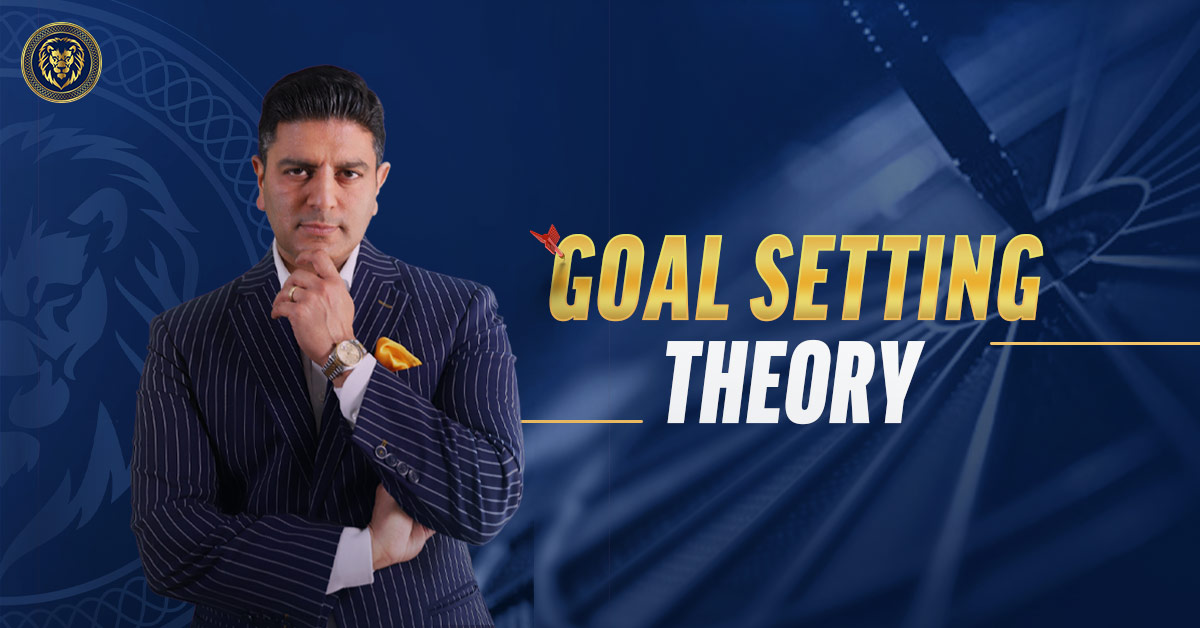Do you set goals and find it frustrating to meet these goals?
Goal setting isn’t a new concept for most of us and yet, most people do not take goal setting seriously. This is because they simply don’t believe that setting goals actually works, even though there’s a lot of research that suggests otherwise. It has been corroborated through research, time and again, that the people who set goals have a much higher probability of achieving their goals, compared to the people who don’t set goals.
It’s important to understand that goal setting is a prerequisite to achieving the life you desire. It is known that people who write down their goals, and review them often, have an even higher probability of achieving their goals, especially when these goals are really specific, and they have a deadline attached to them, and the goals carry meaning.
One of the things I want you to understand, is that when it comes to setting goals, it’s not setting goals that fails people, it’s the thinking that goes behind the goal-setting that is often flawed, thus resulting in the goal not being accomplished.
To begin with, there are a number of elements of advanced goal-setting that are extremely valuable for ambitious people who want to give themselves the best chance of achieving their goals.
Let’s delve into two small elements of goal setting, which are a part of the curriculum that I teach in detail in my ‘MBA of Success Program’.
Now, when it comes to goals, it’s always best to not just have a wish or a hope, because a wish or a hope just doesn’t have that level of intensity and energy that one needs to be able to propel oneself into committed action that achieving goals requires. Many people have extremely high hopes and wishes, but they do not have a concrete goal.
Setting a proper goal declares that one is highly serious and conscious about committing and achieving a particular outcome.
So, this goal-setting exercise I’m sharing with you from my program, will allow you to understand how you can break down your goals to achieve success.
There are two elements of this activity that involves you setting the following:
- a Results-based goal
- a Process-based goal
The first aspect is to identify your results-based goal. It simply means being extremely clear on the result that you want to accomplish in a particular area.
For instance, if you are an individual who has a goal to lose weight, you may say ‘I want to lose weight.’ Clearly, this goal is not a goal. It is incomplete and will not bring you any closer to achieving the result. It’s just like a wish or a hope that will create a delusion, because your brain can’t compute that wish. A goal must be measurable.
Moreover, nobody can validate that you’ve lost weight, as there is no benchmark mentioned in that goal. Even if you can validate your weight loss, it’s not really specific, as they can’t tell if you were able to achieve the specific target you set for yourself. Therefore, to achieve optimum results, one should set a results-based goal.
So, at the onset, if the goals you set are really specific and have a deadline attached to them, there is a higher probability of achieving those goals.
By consciously framing your goal as a results-based goal, you are able to ignite the fire from within to work towards achieving it.
Instead of saying, ‘I want to lose weight”, say “I want to weigh 80 kilos by August 2021.”
Now that’s a specific goal, because a third party can validate that goal. Somebody else can measure your weight in August 2021 and they can validate whether or not you’ve achieved that goal. All you have to do is jump on the scales and see if you’re 80 kilos.
Let’s imagine it’s the 31st of August today and you’re 80 kilos, you’ve obviously achieved your goal. This concept of setting a results-based goal applies to all facets of your life.
Let’s consider the area of money. Your results-based goal may be, “I want to have a net worth of $1 million outside of my family home by the age of 50.” This is a results-based goal because it can be measured.
Now, it’s not sufficient for you to just have a results-based goal, even though it’s a fantastic first step. Once you have set a results-based goal, don’t just stop there. You also need to visualize and emotionalize that goal on a regular basis, so that the achievement of that goal starts to feel familiar to you. Otherwise, all you are going to have is internal friction and you may very well self-sabotage. You’re not going to take the action that you need to take to achieve your goal, because your mind is simply going to say that you have no sense of clarity of the outcome of this goal, and you remain elusive which guarantees failure.
On the contrary, if you are doing your affirmations, visualization, and emotionalization around the achievement of your goal, then your goal will gradually start manifesting because you will become more attentive to the situations that will lead you to your goal, and you will also naturally feel more motivated to act and make decisions. So, start visualizing how you are going to feel once you have achieved this particular goal.
For instance, if you want to be a certain weight by a certain date, it’s important that you have some sort of a visual of that, and ensure you are not just thinking about your goal in words, but instead you’re actually thinking in visuals and you are feeling what it’s going to feel like to be that weight.
After you’ve done all of this, it’s important for you to then break your main goal down into process-based goals. This includes identifying the process that you need to engage in to achieve the particular result. So, going back to the example of the money goal, let’s assume that one of your goals is to achieve a net worth of a million dollars in the next seven years. After creating this results-Based goal, what you must do is identify the
process that you’re going to need to engage in. What action steps do you need to take to achieve this particular goal?
First, to create a process-based goal, you need to identify the gap between where you are and where you want to be. Then you create the processes that need to be implemented. For the scenario discussed above, in order to earn a specific amount in a stipulated time frame, let’s have a look at the process-based goals you would need to create to achieve the main goal.
The process could be:
- Savings plan
- Investment plan
- Insurance plan
The trick here is to identify the specific processes that once accomplished, will give you the result required to achieve your overall goal.
Every process-based goal needs to be specific and measurable as well.
Let me guide you step by step on how you can achieve your results and process-based goals.
- Set a results-based goal that is specific and measurable
- Visualise and emotionalise the goal
- Extensively research what is required for you to fulfil this results-based goal
- Formulate your process-based goals, by making them as specific as possible
- Set a deadline for the process-based goal
- Write down your process and results-based goal on paper and review them every day
There are also a number of other elements to highly effective goal setting, which I’m going to cover in my future articles, including what type of goals you should set to unleash the highest level of creativity and intelligence. It’s important you don’t set the types of goals that you already know how to accomplish, because these goals will feel uninspiring and they won’t enhance your abilities. I will be covering this aspect in one of my future articles.
For now, what I’d like you to do is come up with one results-based goal, and a corresponding process-based goal, for one area of your life, and base it on the guide I share above.
Do let me know how your results and process-based goals pan out. I am looking forward to you experiencing amazing progress.
To Your Success!




Recent Comments